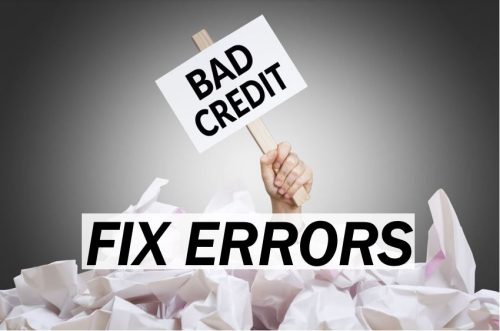
Credit reports are an essential part of your financial life. The document contains personal details about who you are, your credit history, current credit situation, loan paying history, and other information such as liens, foreclosures, bankruptcies, and civil suits.
Sometimes, regardless of how accurate the information in these documents is, there’s a 20% chance of present errors. So what should you do when these errors are present in your document? Here is a brief guide on what you should do.
Why your credit report is necessary
Before a lender offers you a loan, they must check your credit report. They do this to know whether you can pay the current loan or whether you can meet their current requirements, terms, and conditions.
If your credit score is low, it lowers your chance of getting a loan with good interest. The lender may also delay it, make it impossible to receive the loan, or even increase the interest. Other people who might want to view your credit report include your employer, property owners, insurance companies, security companies, and utility companies.
Here is a guide to credit repair on SFgate.com.
Errors in your credit report
As mentioned earlier, credit bureaus (companies that manage these reports) may include
inaccurate information on your report. The result of these errors can be expensive. Some of the common mistakes that you may find in your document include:
– The report may include inaccurate personal details such as a misspelt name, wrong address, email address, or include a name that’s not yours
– Fraudulent transactions on your credit card, where the criminal may take other loans using your names
– Incorrect accounts
– Closed accounts appear to be open
– Duplicated accounts
– Incorrect transaction details such as payment history
– Credit limit information and balance that’s outdated
How do you fix these reports?
It’s always good to dispute the report, considering how much damage a small error can do to your report. Countries such as the US usually have three credit Bureaus. Each firm will provide a free credit report for consumers once every year. You can choose to take all three reports at once to compare the data on each report.
On the other hand, you can take one report from one of the agencies, take the second one from the other company after four months, and the last one from the other company. However, it’s not their duty to note errors in your reports since they deal with billions of transaction information annually.
Having the credit reports information with you comes with numerous benefits. First, you will have confidence when applying for a loan since you know what’s in your report. You also identify errors before you talk to any lender.
Steps to take once you identify errors
Dispute with the reporting company
Assuming you note an error in one of the reports. The next thing to do is write a letter to the reporting company stating some of the details you feel are wrong and why you think so. Ensure that you attach supporting documents as evidence and follow the company’s instructions (which include dispute letter samples and instructions).
The credit bureau will receive your claim and take time to review and investigate it. They will send the details to the credit provider, who should investigate the claim and respond to the credit reporting agency.
Once they notice any errors, the credit issuer will alert all the agencies to correct the information. The credit bureau will send a fresh copy with the updated information.
What if you don’t like the dispute results
Sometimes the result you get might not be what you wanted. Hence, you can decide to redispute the error. Ensure that you have enough evidence and include why you think the conclusion was wrong in your letter. You can also address the dispute with the creditor to correct the mistake.
Other ways include:
– Filling a complaint with the FTC if the credit reporting agency doesn’t provide enough assistance in addressing the issue
– Filling a statement of dispute, which states your side of the complaint to the reporting companies. The document should include up to 100 words
Bottomline
Remember that negative information stays on your report for a few months before it’s deleted. Therefore, it’s essential that you take the necessary steps to ensure that your credit report is ready for review whenever you want to take a loan from a reputable lender. Otherwise, errors can affect your credit score, making loans expensive and uneasy to get.
Interesting Related Article: “How Do Credit Repair Companies Work to Fix Errors on Your Credit Report?“

